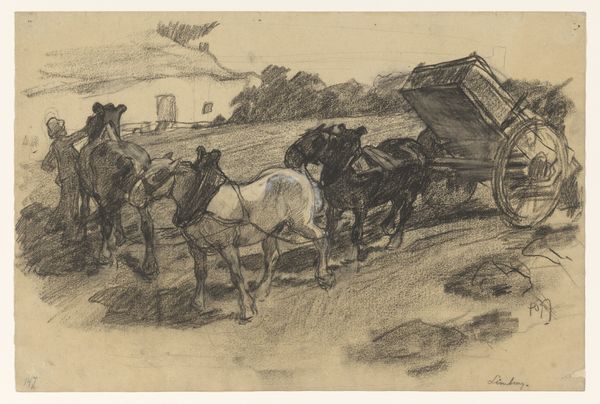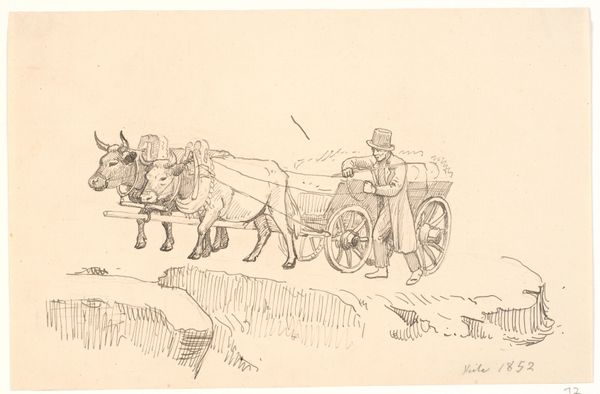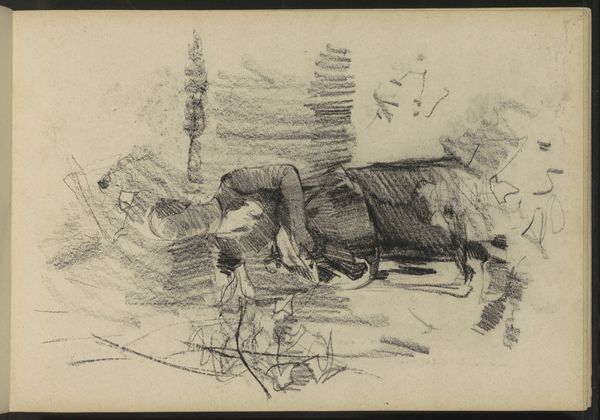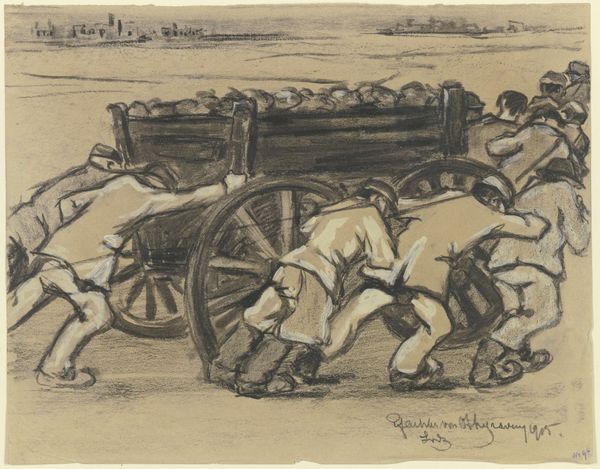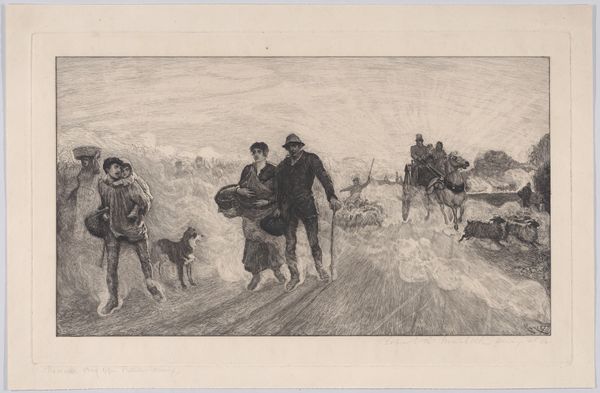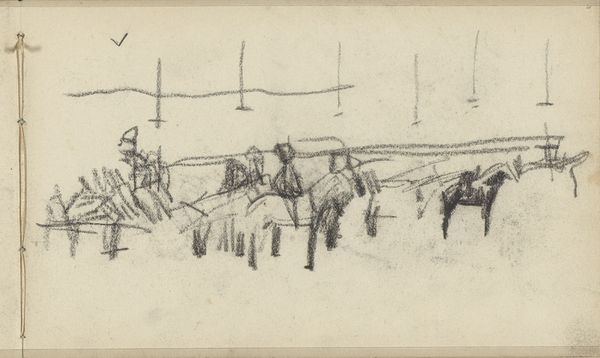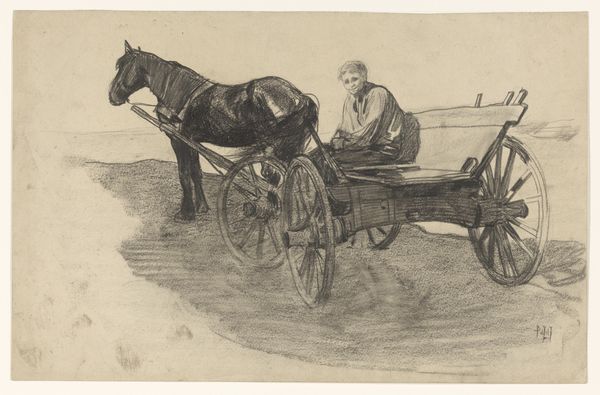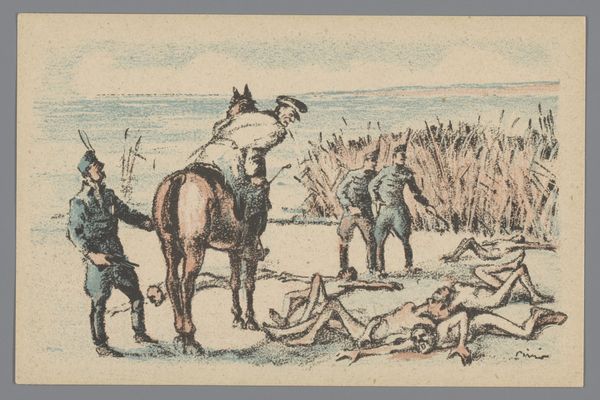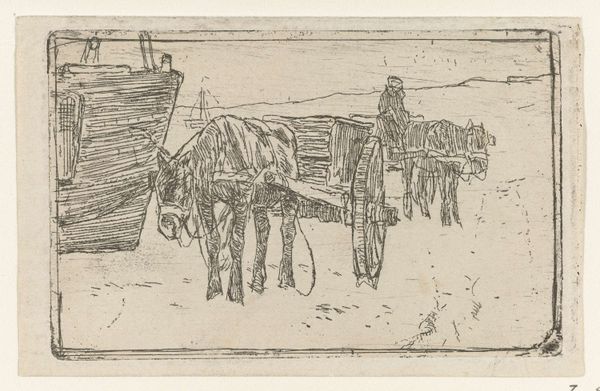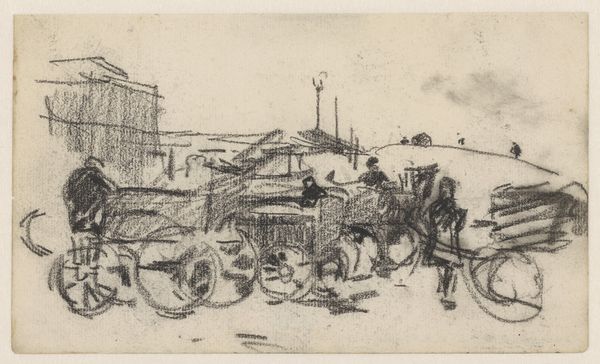
Mannen vastgebonden aan een rijdende wagen worden gegeseld door soldaten 1920
0:00
0:00
drawing, ink, pencil
#
portrait
#
drawing
#
narrative-art
#
figuration
#
ink
#
pencil
#
history-painting
#
realism
Dimensions: height 90 mm, width 142 mm
Copyright: Rijks Museum: Open Domain
Curator: Good morning. We are looking at Mihály Biró’s drawing “Mannen vastgebonden aan een rijdende wagen worden gegeseld door soldaten”, created in 1920. It's currently held at the Rijksmuseum. Editor: It has a grim, stark feeling, doesn’t it? The figures strained against the weight of the wagon, the whip raised. There's an overwhelming sense of forced labor, suffering in that moment. Curator: Absolutely. The linear structure reinforces the tension. Biró masterfully uses ink and pencil to capture the drama of the scene, directing our eye across the composition. Semiotically, the ropes, whip, and burdened wagon signify oppression. Editor: I’m struck by the contrast between the apparent power of the soldiers with the whip, their means of coercion, and the raw human effort being extracted from those pulling the wagon. The physicality of the labor is emphasized by the lines suggesting strained muscles. It makes you consider the unequal distribution of power involved in creating such a scene, and its roots in early 20th century Europe. Curator: Indeed. The drawing operates on a historical plane, evoking narrative-art through realist sensibilities, inviting viewers to confront socio-political themes. This goes beyond mere documentation; it provokes contemplation. The monochromatic palette enhances the solemn atmosphere. Editor: What I appreciate is how Biró focuses our attention on the dehumanizing aspect of forced labor. We can see, feel even, the impact of the materials—the whips, the ropes, the sheer weight of the wagon. These are instruments and tools of domination, transformed into artworks that show their historical consequences on those being forced to toil. Curator: I concur. We can appreciate its aesthetic organization and historical poignancy. Editor: It provides us much to think about how people struggle against injustice in an unequal world, with their work often turned against them.
Comments
No comments
Be the first to comment and join the conversation on the ultimate creative platform.
